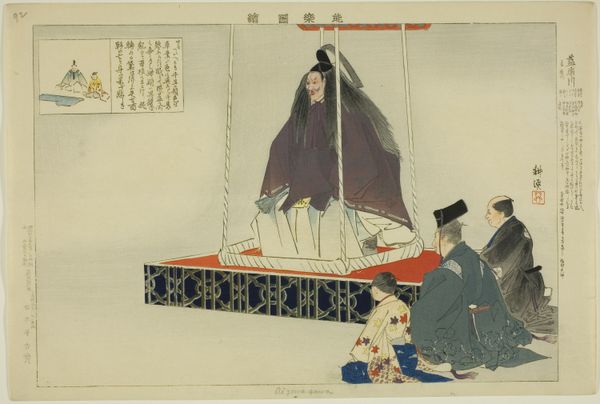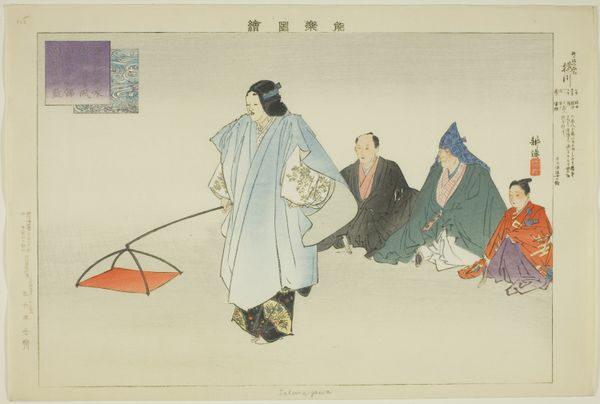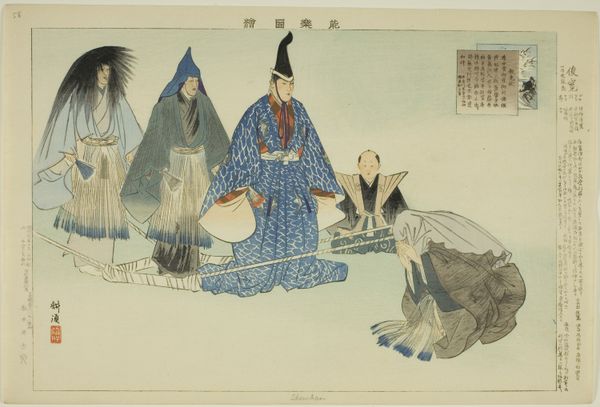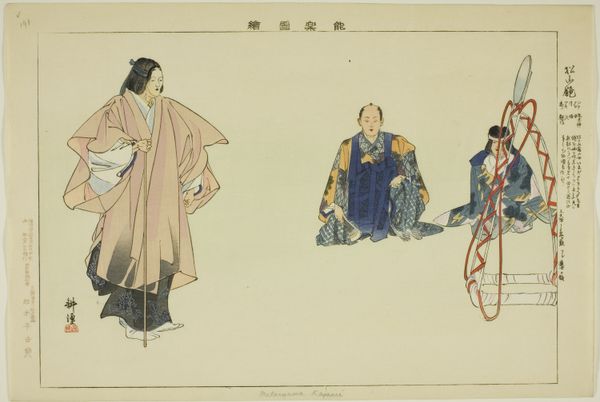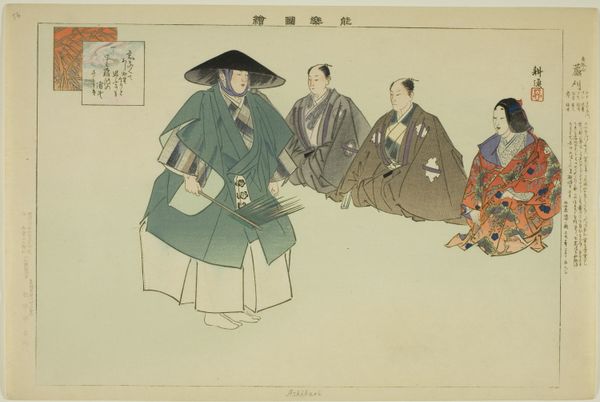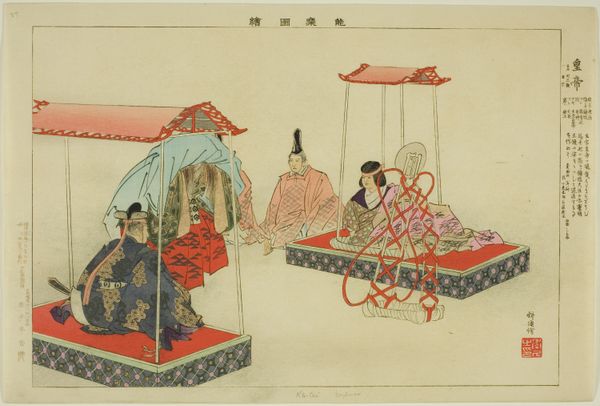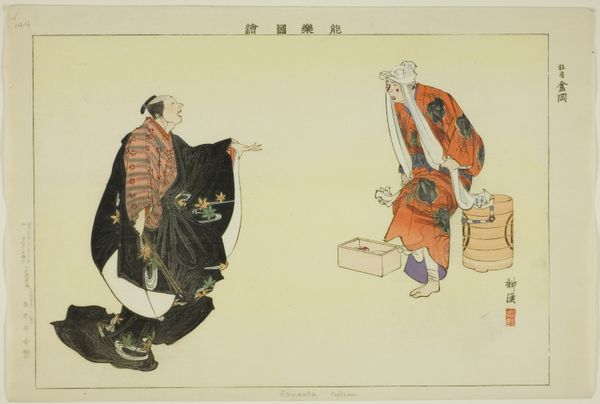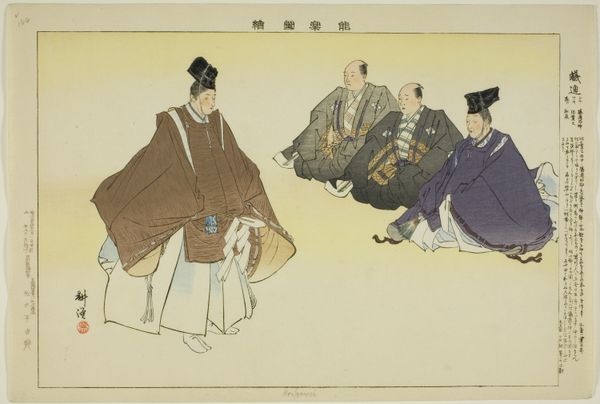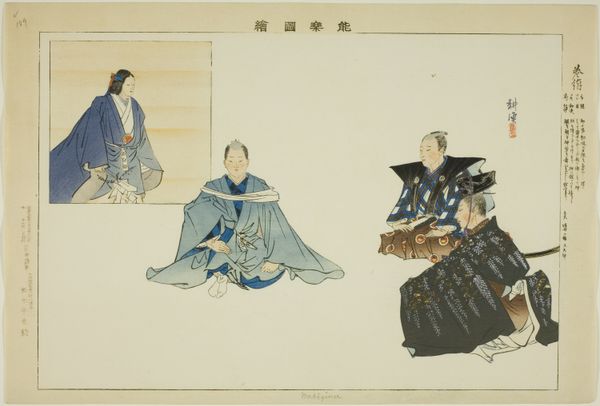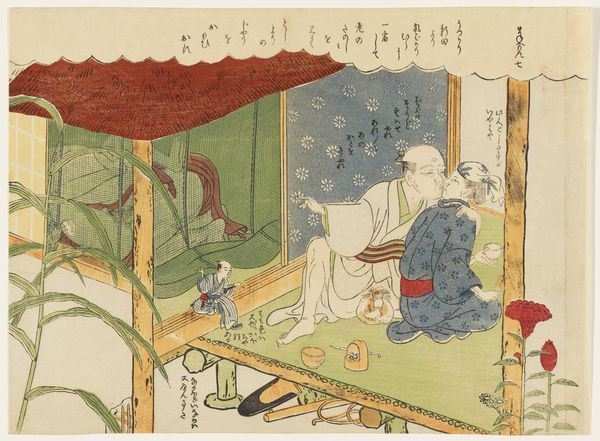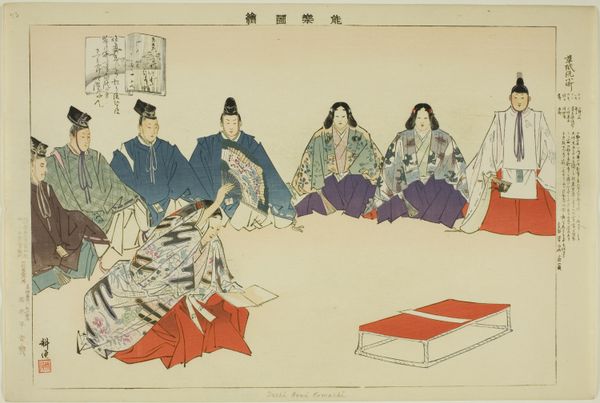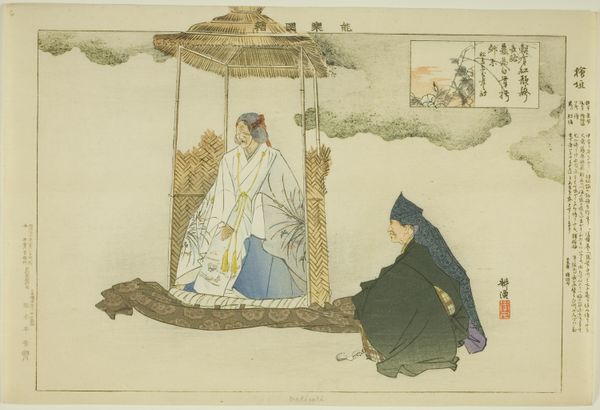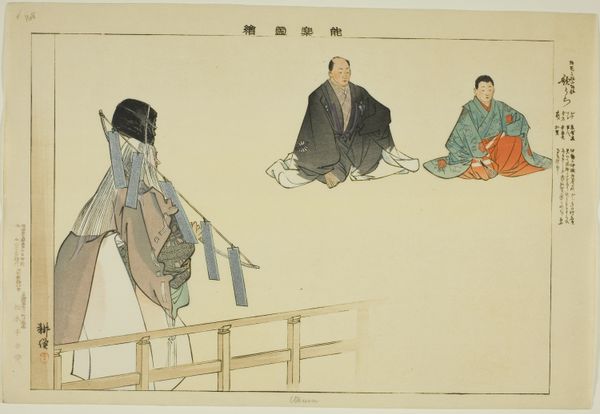
Kagekiyo, from the series "Pictures of No Performances (Nogaku Zue)" 1898
0:00
0:00
Dimensions: Approx. 25.2 × 37.4 cm (10 × 14 4/3 in.)
Copyright: Public Domain
Curator: Tsukioka Kogyo's woodblock print, "Kagekiyo, from the series 'Pictures of No Performances (Nogaku Zue)'" created in 1898, presents us with a captivating scene. The composition, scale, and understated color palette work to evoke an interesting sense of quietude. What are your initial thoughts? Editor: My initial impression is dominated by a sense of the theatrical. The material itself--this print on, perhaps, toned paper – hints at a history of reproduction and distribution. The muted tones seem indicative of specific pigments used during the era. Curator: Indeed. Note how Kogyo employs distinct graphic strategies to represent different spatial realms. The soft focus and gradations in tone create a dreamlike setting. Consider the characters: the figure in the center seated on what seems to be a suspended platform, framed by two attendants, against an otherwise pale background, evoke a sense of isolation and internal reflection. Editor: I agree, but the materials contribute profoundly. These kinds of prints were produced on a large scale and were meant for consumption. Each line speaks to an industrial process that relies heavily on craftsmanship and distribution networks that brought this art into people's homes. Note, for example, the linear carvings in their costumes. Curator: Certainly, the craft is notable; however, let's not disregard the intentional choices behind the character rendering, as well. His pensive expression, for instance, contrasts the traditional warrior scenes—as evidenced in the upper left inset panel. How might we interpret this duality, do you think? Editor: To understand his expression, we must look at his material circumstances, including his clothes. That dark cloth draped upon him conveys social and symbolic information of both his past glory and the present time depicted. The method of producing these garments and their availability point us toward broader economies. Curator: A worthwhile angle, undoubtedly. Overall, Kogyo succeeds in creating an ambiguous space, simultaneously evoking memory and the passage of time through sophisticated interplay of visual signs. Editor: Yes, by analyzing both materials and production, this print becomes more than just a pretty picture; it presents tangible connections that can tell us of that past moment in art history.
Comments
No comments
Be the first to comment and join the conversation on the ultimate creative platform.
